The Seductive Charisma of Femme Fatales
The femme fatale, a seductive and enigmatic figure that has fascinated and captivated audiences for centuries. This iconic archetype, born in literature and immortalized on the silver screen, embodies a complex blend of sensuality, intelligence, and an aura of mystery.
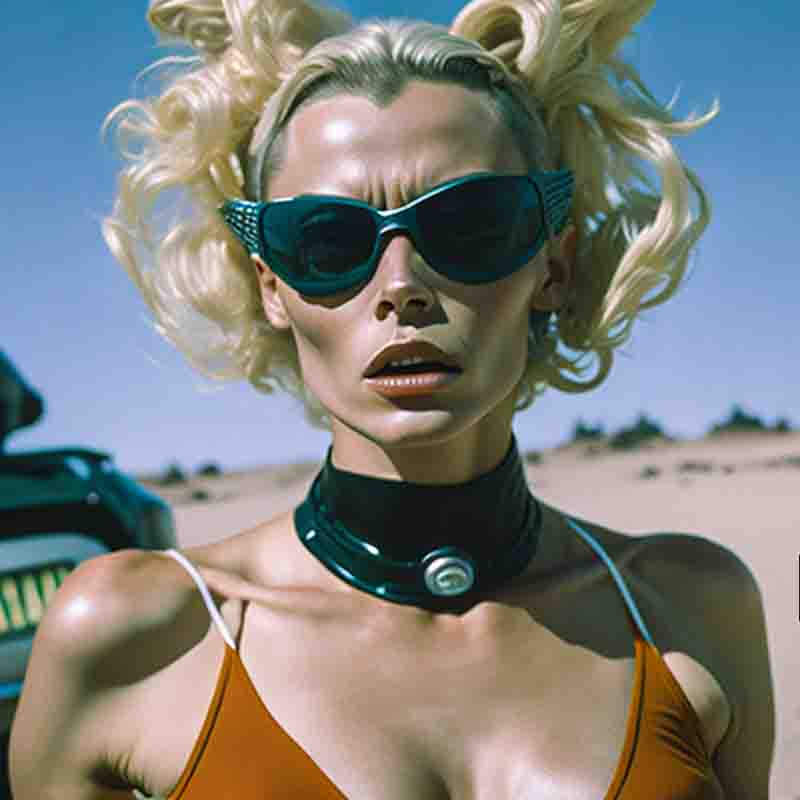
Unlike traditional female characters often defined by their relationships with male counterparts, the Femme Fatale maintains independence from the male gaze.
This dangerously attractive, and sensual women ,possess an unmissable charisma and a mysterious presence that keeps those around them in suspense.
With a mixture of confidence, attraction and a touch of vamp chic, they effortlessly mesmerize others.
Sensual and subversive Women have a deep understanding of their own sensuality that allows them to accept their desires and act out with confidence.
This self-confidence flows from within and draws the admiration and attention of all who meet them.
The term "Femme Fatale" originates from French, translating to "fatal woman." In the context of literature, film, and cultural narratives, a Femme Fatale is a captivating female archetype known for her striking beauty, intelligence, and a magnetic allure that often conceals a sense of danger.
Femme Fatale Timeline
Throughout history, the Femme Fatale has been portrayed in a myriad of ways, reflecting societal attitudes towards femininity and power.
From classic literature like Gustave Flaubert's "Madame Bovary" to film noir classics such as "Double Indemnity" and contemporary representations in popular media, the Femme Fatale remains a dynamic and multifaceted character.
Her character invites audiences to reflect on the intersection of beauty, intelligence, and the darker facets of human nature, providing a rich tapestry for storytelling and cultural analysis.
| Time Period | Historical and Cultural Movements | Key Influences |
|---|---|---|
| Ancient Mythology | Antiquity | Sirens in Greek mythology serve as early examples of tempting women |
| Medieval | Middle Ages | Influence of literary temptresses in medieval tales |
| Renaissance | 14th - 17th century | Femme Fatale themes in Renaissance literature and art |
| 19th Century | Romanticism and Victorian Era | Exploration of seductive and dangerous women in literature |
| Late 19th Century | Fin de siècle | Symbolic Femme Fatales in art and literature during this period |
| Early 20th Century | Silent Film Era | Theda Bara's portrayals in silent films shape early cinematic image |
| 1930s - 1940s | Film Noir and Golden Age of Hollywood | Classic Femme Fatale characters in films like "Double Indemnity" |
| Post-WWII | Post-War Era and Rise of Noir Influence | Continued prominence of Femme Fatales in film and literature |
| 1960s - 1970s | Counterculture | Evolution of the archetype in response to changing social norms |
| 1980s - 1990s | Femme Fatale in Neo-Noir and Thrillers | Reinterpretations in films like "Basic Instinct" and "Fatal Attraction" |
| 21st Century | Contemporary Perspectives | Feminist reevaluations, diverse representations in literature |
| Present Day | Modern Storytelling and Cultural Impact | Ongoing influence in film, literature, and popular culture |
This timeline provides an overview of the Femme Fatale archetype's evolution across different historical periods, cinematic movements, and cultural shifts. Each entry highlights key influences and developments that contributed to the shaping of this enduring and complex character.
Her enigmatic charisma arouses the curiosity of others and intrigues them.
The archetype of the femme fatale in Hollywood was German American actress Marlene Dietrich.
Captivating and seductive females with their sultry voice, androgynous style, and air of mystery, she captivated audiences and drove men wild.
She was often cast as the seductive woman who led men to their doom, but she also subverted the trope by being intelligent, independent, and in control of her own destiny.
Powerful and predatory women have become an integral part of Music, Fashion, and Counter Culture.
Captivating Vixens
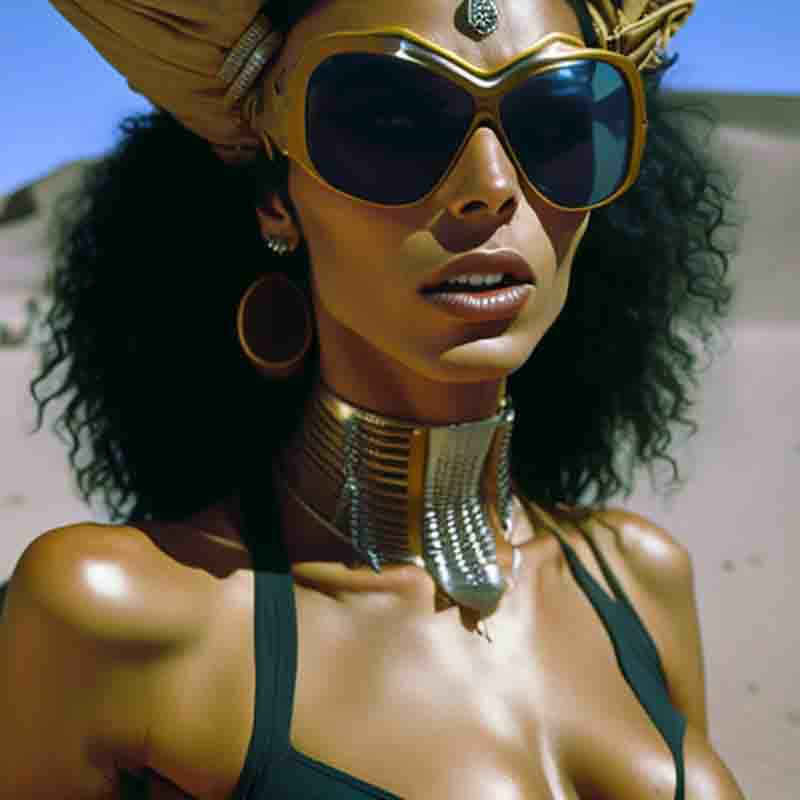
The seduction of her affair had awakened her spirit and rekindled a fire that had long been dimmed by the routine of her existence. With each clandestine encounter, she plunged deeper into a realm where the boundaries of time and space evaporated and her heart yearned to receive the cosmic unknown.
They possess a mystical aura that captivates the minds of people who are longing to discover more about them.
This aura comes from their ability to balance their attraction with an element of veiling, giving them a sense of curiosity and magnetism.
The island of Ibiza is gorgeous, and the stunning women of Ibiza are among the most beautiful in the world.
A femme fatale, the sensual woman, has mastered the art of keeping others guessing. She exudes a mysterious vibe that makes us wanting to know her.
The enigmatic smile she wears, the way she moves with ease, and the elusive sparkle in her eyes - there's an unspoken seduction that draws you in.
Mystery becomes a seductive force that fires our imagination and fuels an indomitable curiosity.
Spirited seductress

In the depths of her imagination, a cosmic dance is being performed. She envisions a creature from a distant galaxy that is formed in a wondrous style, ethereal as well as intriguingly alien. Its touch, she imagines, is a symphony of sensations that will set fire to her every neuron with electric desire.
Femme fatale, sensual women exude a confidence that is both empowering and irresistible.
They have a keen understanding and appreciation of their own desires, strengths and unique virtues.
A femme fatale is attractive not only by her looks. Even though she is undeniably beautiful, it is her inner strength and confidence that truly make her stand out.
Her unshakable conviction in true love inspires and motivates you to experience your own individual sensuality.
The femme fatale identity
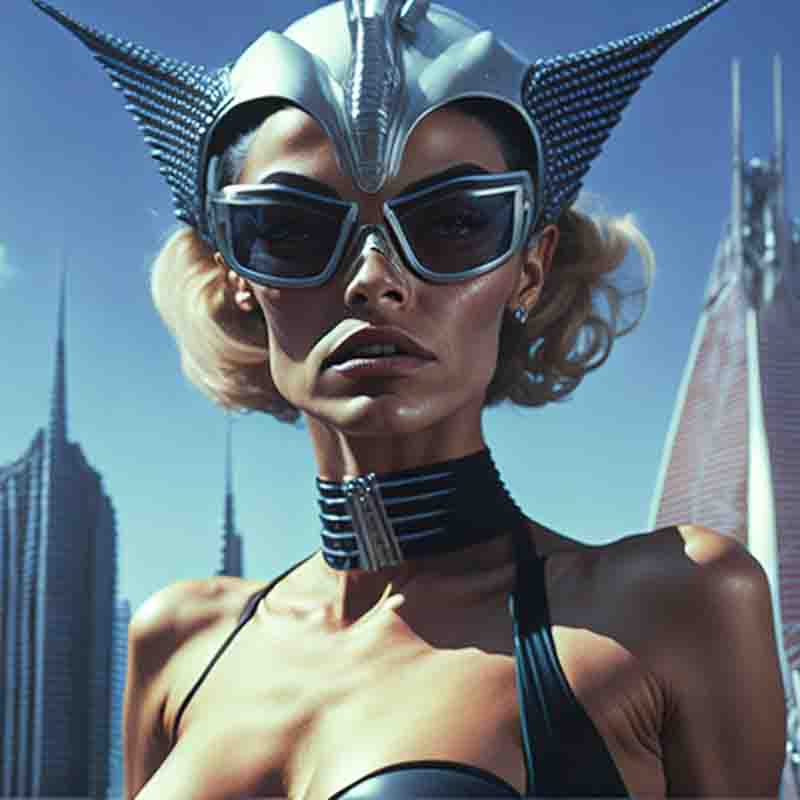
Her thoughts form a playground for cosmic fantasies, and in the depths of her imagination she sees a tantalizing encounter with an extraterrestrial being.
Sensual femme fatale women understand the power of their mind and use their intelligence to their advantage.
They have a penetrating understanding, quick perceptions, and a deep understanding of their surroundings.
Their mental abilities add to their fascinating personalities and captivate others with their stimulating conversations and insightful perspectives.
Their emotional depth allows them to connect with their environment on a deeper level.
Femme fatales master a seductive intelligence that goes far beyond pure knowledge.
The sensuality of the femme fatale embodies a combination of beguiling qualities that make these women irresistible and unforgettable.
Their attraction, mysterious aura, self-confidence, intelligence and seductive beauty combine to create a tantalizing effect that leaves a strong appeal.
Sensual femme fatale women recognize the power of their physical appearance and are aware of how to flaunt their natural assets.
Cosmic erotic fantasies

She longs for an encounter that awakens her senses, where the touch of a strange lover is like an electric current that ignites her entire being. She imagines their bodies entwining, an exquisite dance of heavenly desire where the clash of flesh transcends the boundaries of mortal lust.
The sensuality of the femme fatale is an irresistible force emanating from a woman with magnetic effect and irresistible charm.
It is an interplay of diverse elements that together create an aura of mystery and seduction.
The allure begins with the way a femme fatale carries herself, exuding confidence and self-assurance with every step.
Her posture, body language and the way she maintains eye contact all contribute to her irresistible appeal.
Acknowledging her sensuality and self-expression without apology is a fundamental move towards cultivating the personal potency of the femme fatale.
The femme fatale lifestyle is a powerful and dynamic way of experiencing. It stands for self-confidence, self-expression and empowerment.
The Origin of Femme Fatale: A Mythical Beginning
Originating in ancient myths and evolving through literature, art, and cinema, the femme fatale has continually fascinated and mystified audiences.
The concept of the Femme Fatale finds its roots in ancient mythology.
In these tales, we encounter sirens, enchantresses, and goddesses who possessed a dangerous allure capable of ensnaring even the most steadfast of heroes.
In Greek mythology, the sirens, beguiling creatures who lured sailors to their doom with their enchanting voices, bear resemblance to the femme fatale archetype.
Likewise, the biblical figure of Delilah, who used her allure to betray Samson, embodies the idea of a seductive and treacherous woman.
They wielded their seductive powers as both a weapon and a means of survival, showcasing an early incarnation of the Femme Fatale.
Evolution Through Literature and Art

The concept of the femme fatale, a mysterious and captivating woman with a penchant for ensnaring men in her web of allure and danger, has deep roots in history and storytelling.
Fast forward to the 19th century, and we witness the emergence of the term "Femme Fatale" in French literature, particularly in the works of Théophile Gautier, Charles Baudelaire, and Gustave Flaubert.
Baudelaire's poems in "Les Fleurs du Mal" explored themes of forbidden desire and temptation, while Flaubert's "Madame Bovary" presented Emma Bovary as a tragic and complex femme fatale, trapped in societal constraints.
These literary explorations laid the groundwork for a more nuanced and psychologically layered depiction of femme fatales.
Artistic movements, including Symbolism and Art Nouveau, further embraced the Femme Fatale as a muse.
Painters like Gustav Klimt and writers like Oscar Wilde explored the sensuality and complexity of these characters, giving them a lasting place in art history.
Golden Age of Film Noir: Iconic Femme Fatales on the Big Screen
The femme fatale reached the zenith of her popularity during the Golden Age of film noir in the 1940s and 1950s.
Film noir, a genre known for its moody cinematography and morally ambiguous characters, provided the perfect canvas for the femme fatale to shine.
Iconic characters like Phyllis Dietrichson in "Double Indemnity" (1944) and Brigid O'Shaughnessy in "The Maltese Falcon" (1941) showcased the archetype's cunning, manipulative, and enigmatic qualities.
Legendary actresses such as Barbara Stanwyck, Lana Turner and Marlene Dietrich likewise breathed life into the characters of those femme fatales.
These women were strong, seductive, and unapologetically independent, blurring the lines between heroines and antiheroes.
Evolving Beyond Conventions
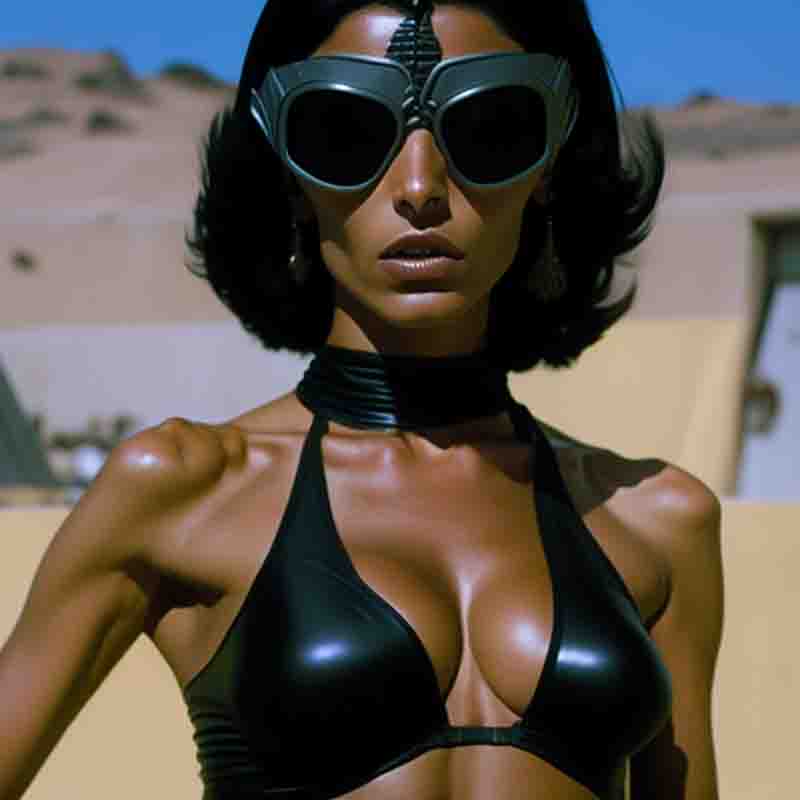
The femme fatale remains an enduring and iconic figure, reminding us of the power and allure of complex, enigmatic women who defy convention and challenge our perceptions of femininity.
As societal norms evolved, so did the femme fatale. In the 1960s and 1970s, during the rise of feminism, a new breed of femme fatales emerged.
Characters like Bonnie Parker in "Bonnie and Clyde" (1967) and Evelyn Mulwray in "Chinatown" (1974) demonstrated a shift in the archetype.
These women were no longer merely destructive, but often used their attraction as a form of empowerment in a male-dominated world.
The Femme Fatale in Modern Culture
In contemporary culture, the femme fatale continues to evolve.
She can be seen in various forms, from the morally complex antiheroines of television series like "Killing Eve" to the empowered characters of graphic novels and comic book adaptations like Black Widow and Catwoman.
These modern incarnations often grapple with issues of agency, identity, and societal expectations, challenging the traditional boundaries of the archetype.
She challenges societal norms, prompting discussions about gender roles, sexuality, and power dynamics.
The femme fatale serves as a mirror to cultural attitudes and anxieties, revealing our fascination with and fear of strong, independent women who exist outside conventional boundaries.
The femme fatale continues to captivate audiences because she represents a timeless tension between desire and danger.
Her allure reminds us of the irresistible pull of forbidden desires, even as we recognize the potential consequences.
In a world where individuality and empowerment are celebrated, the femme fatale embodies a form of rebellion, an assertion of agency and independence that continues to resonate with modern audiences.
Fashion and the Femme Fatale
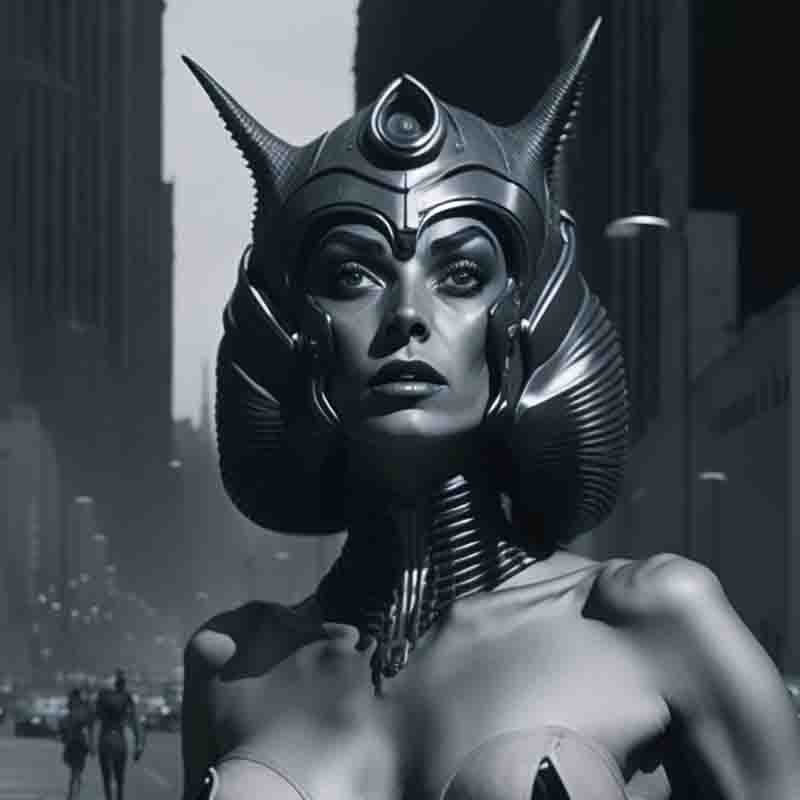
Femme Fatales challenge traditional gender roles and expectations. They are often portrayed as strong, independent, and in control of their own destinies, making them symbols of female empowerment.
Fashion has played an integral role in defining the Femme Fatale's image.
The signature red lipstick, sultry black dresses, and accessories like fedora hats and cat-eye sunglasses have become synonymous with her style.
These elements convey not only sensuality but also empowerment, as the Femme Fatale uses fashion as a form of self-expression and empowerment.
Psychological Dimensions of the Femme Fatale
Delving deeper, we uncover the psychological dimensions of the Femme Fatale.
She is not merely a seductress but a complex character with layers of motivation and ambition.
Her ability to manipulate and navigate the intricate webs of desire and power is a testament to her psychological depth.
Modern Interpretations and Adaptations
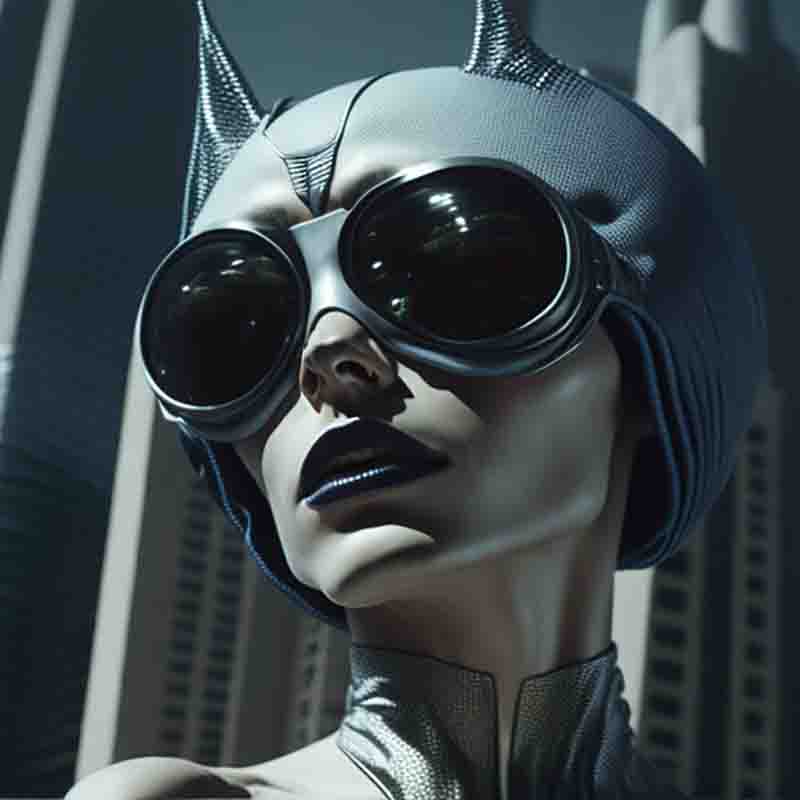
In literature, art, cinema, and computer games the Femme Fatale continues to be a source of fascination, challenging and captivating audiences with her multifaceted nature and enduring appeal.
As societal norms have evolved, so too has the portrayal of the Femme Fatale.
In modern times, we find Femme Fatales who are multidimensional, challenging traditional narratives of female characters.
They are agents of their own destiny, making choices that reflect their empowerment and complexity.
In the 21st century the Feme Fatal lives on in the narrative of the cyberpunk genre through stories, films and most importantly as character in computer games.
Femme Fatale Symbolism and Influence
Beyond literature and film, the Femme Fatale's influence extends into various aspects of culture.
Her symbolism, representing a blend of sensuality and danger, has left an indelible mark on art, music, and even fashion.
She is a timeless muse for artists and designers alike, embodying sophistication and intrigue.
Empowerment and Ambiguity: The Dual Nature of Femme Fatale
The Femme Fatale is a character of dualities. She challenges conventions, blurring the lines between right and wrong, good and evil.
While some view her as a symbol of female empowerment, others see her as a perpetuation of stereotypes.
Her enduring allure lies in this very ambiguity, inviting us to question our own perceptions of morality and desire.
Femme Fatale Defined
Before delving into specific characters, it's crucial to understand the essence of the femme fatale archetype.
A femme fatale is a woman who possesses an irresistible charm, intelligence, and sensuality.
She uses these qualities to manipulate and often ensnare men in dangerous or morally ambiguous situations.
Femme fatales are complex characters, defying conventional norms of femininity and morality.
Femme Fatales in Classic Cinema
The classic era of cinema, spanning from the 1920s to the 1950s, saw the rise of many unforgettable femme fatales who became synonymous with the genre.
-
Fay Wray as Ann Darrow in "King Kong" (1933) In "King Kong," Fay Wray's portrayal of Ann Darrow captivated audiences as she became the object of Kong's affection. Darrow's vulnerability and beauty in the face of danger embodied the classic femme fatale allure.
-
Barbara Stanwyck as Phyllis Dietrichson in "Double Indemnity" (1944) Barbara Stanwyck's Phyllis Dietrichson in "Double Indemnity" is the epitome of a cunning and manipulative femme fatale. Her platinum blonde hair and glamorous fashion choices set the standard for the femme fatale look.
-
Rita Hayworth as Gilda in "Gilda" (1946) Rita Hayworth's Gilda is an iconic representation of sensuality and mystique. Her famous glove removal scene became an enduring symbol of seduction.
-
Lauren Bacall as Vivian Rutledge in "To Have and Have Not" (1944) Lauren Bacall's husky voice and sultry looks made her an instant sensation in "To Have and Have Not." Her effortless style, including tailored suits, became a fashion statement.
-
Veronica Lake as Ellen Graham in "This Gun for Hire" (1942) Veronica Lake's peek-a-boo hairstyle and smoky eyes made her instantly recognizable. Her portrayal of Ellen Graham in "This Gun for Hire" solidified her status as a femme fatale.
-
Mae West as Lady Lou in "She Done Him Wrong" (1933): Mae West portrayed Lady Lou, a seductive singer in a speakeasy during the Prohibition era. Her character's flirtatious and humorous interactions with various men in the film, including a young Cary Grant, added to her legendary status.
-
Marlene Dietrich as Lola Lola in "The Blue Angel/Der blaue Engel" (1930): Marlene Dietrich's most famous femme fatale role. She plays Lola Lola, a cabaret singer who seduces a respectable professor (Emil Jannings) and leads him to his downfall.
These femme fatale characters played a pivotal role in shaping the landscape of classic cinema.
They challenged traditional gender roles, offering complex and powerful portrayals of women who were unafraid to use their allure and intelligence to navigate a male-dominated world.
The Femme fatale became emblematic of a society grappling with post-war uncertainties, reflecting anxieties and desires related to gender, sexuality, and power dynamics.
The Femme Fatale is a symbol of complex human desires, moral ambiguity, and societal dynamics.
Her influence extends beyond storytelling, touching on themes of seduction, power, feminism, and the human condition.
As a reflection of both our fears and desires, she continues to captivate and intrigue, making her a timeless and enduring figure in culture and art.
The femme fatale: FAQ
Are you curious about music, art, technology, fashion, humanity, lifestyle, and beer?
If so, then you need to subscribe to the free Likewolf newsletter.
100% privacy. When you sign up, we'll keep you posted.
Alternative Ideologies
Social and Cultural Movement
